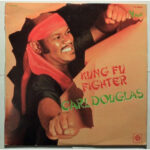It’s a confession many music lovers share: a soft spot for songs that explore the depths of loneliness. There’s something profoundly relatable in melodies and lyrics that articulate the universal experience of feeling isolated. Following a deep dive into Calvin Harris’ electronic anthem “I’m Not Alone,” it feels fitting to explore the other side of that coin with a song simply titled “Alone,” specifically Heart‘s iconic rendition. My thoughts drifted to this 1987 chart-topper – a song that dominated the Billboard Hot 100 – partly due to its recent discussion in a popular music theory class. While power ballads might not always be my go-to genre, “Alone” stands out as an exception, a track that consistently captures my attention.
My initial encounter with “Alone” was solely through Heart’s powerful performance. However, delving into the song’s history revealed that Ann and Nancy Wilson’s band was actually the third to record it. The songwriting masterminds Billy Steinberg and Tom Kelly first laid down “Alone” in 1983 under the band name i-Ten. A year later, Valerie Stevenson and even actor John Stamos covered it for the soundtrack of the CBS sitcom Dreams. Listening to these earlier interpretations, the core elements that make Heart’s version so compelling are already present: the melody is largely consistent, with variations primarily in instrumentation and vocal delivery. Yet, my preference for Heart’s version remains unwavering, rooted in those very sonic qualities and subtle yet impactful changes they brought to the song. This exploration will focus on dissecting the nuances that elevate Heart’s “Alone” to its celebrated status.
From the very first notes of Heart’s “Alone,” the 1980s sonic landscape is instantly recognizable, largely thanks to Nancy Wilson’s keyboard arrangement. The sound occupies a space between the classic piano and the quintessential Yamaha DX7 synthesizer – a defining instrument of the decade. While initially I wasn’t drawn to this particular synth sound, I’ve since developed a genuine appreciation for its prevalence in countless 80s hits and the unique character it infuses into those tracks. This specific synth tone is characterized by a pronounced high end, contrasted with a somewhat scooped midrange, resulting in a slightly hollow timbre. This hollowness perfectly encapsulates the emotional vulnerability prevalent in power ballad verses, where vocalists often express longing for love or lament its absence, as Ann Wilson poignantly does in “Alone.”
The song’s structure follows a familiar yet effective path, transitioning from the minor key of the verse (B-flat minor) to the relative major (D-flat Major) at the pre-chorus’s close (“I hope that it won’t end, though / Alone”), signaling a shift towards hopefulness. However, instead of lingering in the relative major, the song makes a more dramatic move to B Major – a major key a whole step lower – for the chorus. This key change is particularly intriguing. While it introduces a brighter feel, partly due to the E-flat minor chord preceding the D-flat Major, this brightness feels fleeting within the broader context of the chorus. This musical choice mirrors the lyrical sentiment: Ann Wilson isn’t singing about successfully being with the person “alone,” but rather questioning the very possibility of achieving that intimacy. This uncertainty, this lack of resolution, can certainly breed an internal darkness as one grapples with the fear of missed opportunities for love. The song’s final return to the minor key reinforces this sense of unresolved longing, suggesting the narrator remains in search of an answer.
It’s in the chorus and the song’s ending where Heart and their production team truly showcase their artistry and masterful interpretation of “Alone,” through subtle yet impactful alterations to Steinberg and Kelly’s original composition. Firstly, Ann Wilson’s vocal phrasing in the chorus’s opening line is a stroke of genius. Instead of “I always fared well on my own,” starting on the third upbeat, Ann sings “Til now, I always got by on my own,” commencing on the second beat. This seemingly minor adjustment injects a significant dose of drama and immediacy. Ann’s rendition emphasizes the vulnerability and shift in perspective with a powerful vocal leap to the highest notes of the song right at the start of the chorus. This energetic launch contrasts sharply with the earlier versions, which, in retrospect, feel somewhat lacking in that crucial emotional punch at the pivotal chorus entry.
Secondly, Heart opted for an instrumental fade-out ending, diverging from the original versions’ return to the opening verse lyrics after the final chorus. This instrumental conclusion, while not bringing the song full circle lyrically, provides a more resonant and emotionally impactful resolution. Ending on the question “How do I get you alone?” without a vocal resolution leaves the listener contemplating the narrator’s unresolved yearning. The absence of vocals in the fade-out emphasizes this internal struggle, suggesting a deep, unspoken contemplation of what steps to take next. The track concludes without offering a clear answer, a feeling that perfectly encapsulates the song’s narrative of longing and uncertainty.
Heart’s rendition of “Alone” not only provides a fitting and powerful instrumental arrangement but also elevates the original song through carefully considered tweaks that amplify its emotional depth and thematic resonance. While the Wilson sisters may not have penned the lyrics and melody, their interpretation undeniably transformed “Alone” into its definitive and most compelling form – a power ballad that, even for those ambivalent to the genre, is hard to resist singing along to, time and time again.

